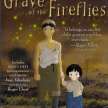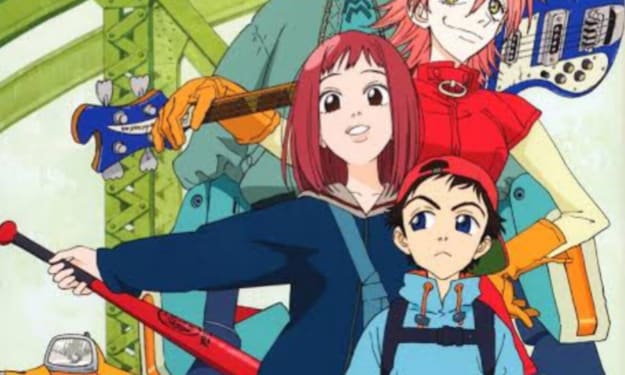
Anime Analysis
Moving beyond entertainment, anime analysis delves into the intricate tapestry of narrative, artistic expression, and cultural significance.
1. Narrative Deconstruction
Plot Structure: Employ a critical lens to examine the plot's construction. Is the narrative linear or episodic? How effectively does it build tension and suspense through plot twists and reveals?
Genre Conventions: Consider the specific genre of the anime (e.g., mecha, slice-of-life). Analyze how it adheres to or subverts genre expectations.
Thematic Exploration: Uncover the underlying messages and ideas woven into the narrative. Does the anime explore universal themes of coming-of-age, social commentary, or existential questions?
Symbolic Language: Identify recurring imagery, objects, or color palettes. Decipher their deeper meaning within the context of the story. Does a single red bloom signify passionate love or impending danger?
Visual Metaphors: Unpack the metaphorical meaning behind visuals. A stormy night might represent emotional turmoil, a ticking clock could symbolize a race against time, or a character's physical scars could reflect their past traumas.
2. Character Examination
Motivations and Goals: Dig beneath the surface of characters' actions. What drives them? Explore their desires, fears, and internal conflicts that shape their decisions.
Developmental Arcs: Analyze how characters evolve and transform throughout the narrative. Do they overcome challenges and exhibit personal growth?
Archetypal Representation: Identify character archetypes such as the hero, the villain, or the wise mentor. How do these characters subvert or fulfill audience expectations?
Interpersonal Dynamics: Explore the complex web of relationships between characters. Are friendships supportive and nurturing? Do rivalries create compelling conflicts that drive the plot?
3. Narrative Techniques
Focalization: Consider who narrates the story and the impact of perspective. Does a first-person narrator provide a subjective lens, or does an omniscient observer offer a detached overview?
Dialogue Analysis: Examine the style and function of dialogue. Does it reveal personality traits and social hierarchies? Is it witty, dramatic, or a realistic portrayal of everyday conversations?
Pacing and Flow: Analyze the speed at which the story unfolds. Does it have a balanced rhythm between fast-paced action and expository scenes that provide necessary context?
4. Technical Execution
Animation Style: Evaluate the art style, animation techniques, and fight choreography. Is the animation fluid and dynamic? Does it complement the overall tone and themes of the narrative?
Soundscapes and Scores: Explore how music and sound effects enhance the viewing experience. Does a melancholic piano composition underscore a character's loss? Do intense sound effects heighten the tension and drama during action sequences?
5. Thematic Depth
Philosophical Undercurrents: Explore the anime's engagement with philosophical ideas and psychological concepts. Does it delve into existentialism, Freudian psychoanalysis, or moral dilemmas?
Cultural Context: Analyze the anime's cultural background and influences. How do Japanese societal values, historical events, or folklore shape the story and characters?
Religious Symbolism: Examine how religious beliefs or symbolism are incorporated into the narrative. Does it reflect elements of real-world religions or create a unique belief system within the anime's universe?
6. World-Building Exploration
Fictional Milieu: Investigate the fictional world the anime takes place in. Is it a futuristic cityscape, a fantastical realm governed by magic, or a realistic depiction of contemporary Japan? How do the established rules and limitations of this world govern the narrative's possibilities?
7. Beyond the Narrative
Action Sequences: Analyze the quality and style of action sequences. Are they well-choreographed and thrilling to watch? Do they contribute meaningfully to the plot, or do they feel like filler material?
Fidelity in Adaptation: If the anime is based on a manga or light novel, explore how faithfully it adapts the source material. Does it capture the essence of the original story while translating it effectively to the animated medium?
Intertextual Connections: Identify references to other anime, films, or cultural phenomena that might have influenced the work. How do these connections enrich the viewing experience for audiences familiar with the source material?
8. Impact and Legacy
Fan Community: Investigate the fan community surrounding the anime. How has the community contributed to the anime's popularity and cultural significance?
Critical Evaluation: Formulate a well-supported conclusion based on your analysis. What are the anime's strengths and weaknesses? How does it stand within the broader context of anime history and its influence on the genre?
Remember, analysis is subjective, but informed interpretations backed by evidence from the anime itself strengthen your arguments. This framework equips you to delve into the multifaceted world of anime with a critical and scholarly approach.
About the Creator
Murali
Hi guys
Reader insights
Outstanding
Excellent work. Looking forward to reading more!
Top insights
Expert insights and opinions
Arguments were carefully researched and presented
Heartfelt and relatable
The story invoked strong personal emotions






Comments (1)
Interesting story